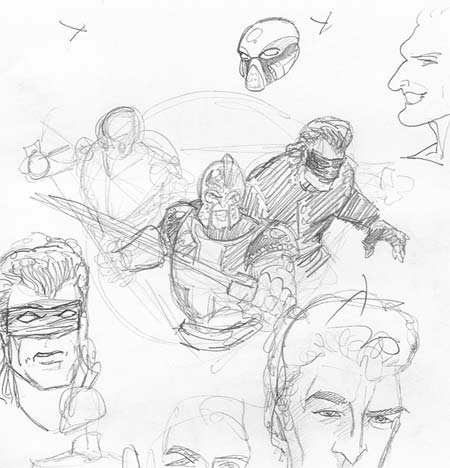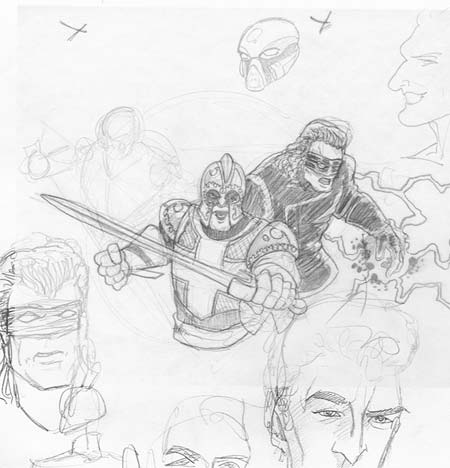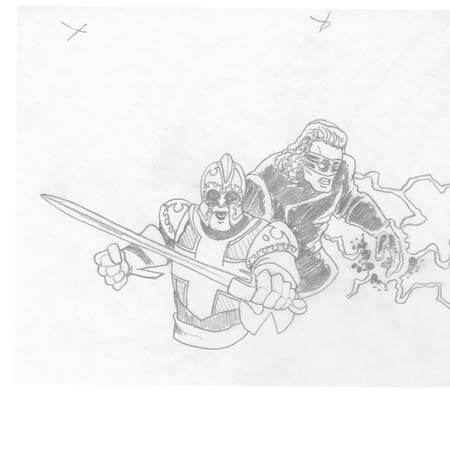A while back I posted a quick tour of how you can use layers to improve your digital illustrations. But not everyone has a Wacom pen tablet, Photoshop, and Flash. Or even a computer. So how can you improve your drawings without those things?
You go old school, baby! You need a pad of tracing paper, which is thin and see-through, a pencil, and some regular paper to start off with.
First, make a rough sketch on your regular paper. I scanned in a scribble from a ten year old sketch pad I had next to my desk. As you can see, once you go over your basic freehand drawing a bunch of times to get it looking right, you're left with a bunch of unnecessary lines and you can't tell what's really supposed to be going on. Not good.

Once your sketch is roughly how you want it -- or at least, when it's at a point where you can tell where you want it to end up -- put two "x"es in either corner. Lay your tracing paper over the original, and tape the two together. On the tracing paper, trace the two "x"es. These are your registration points, so you can make sure the two pieces of paper stay lined up properly while you're drawing.
On the tracing paper, trace your original sketch, using only the lines you want to be your final ones. You'll find yourself moving small bits here and there to make sure everything lines up properly. For instance, I had to move the background figure's hand further down, as it wasn't in the right place originally. Here's what the tracing paper looks like while over the starting illustration:

Once you're done, remove the tracing paper and see the final pencil sketch. It should be much tighter and cleaner than the original. If you want to be adventurous and take it to the next and final stage of inking, there's a trick for that, too. Flip the tracing paper over and, with your pencil held flat, scribble all over the paper behind the traced drawing, leaving a good film of graphite. Tape the tracing paper right-side up on some high-quality inking paper, and trace back over your lines once more. The graphite on the back of the tracing paper will get pushed onto the nice white sheet, transferring your line work.
Congratulations, you've now gone from a rough sketch in a drawing pad to a ready-to-be-inked, nice-looking, clean illustration, and all without having to plug in a single thing! Here's what the tracing looks like without the original beneath it:


